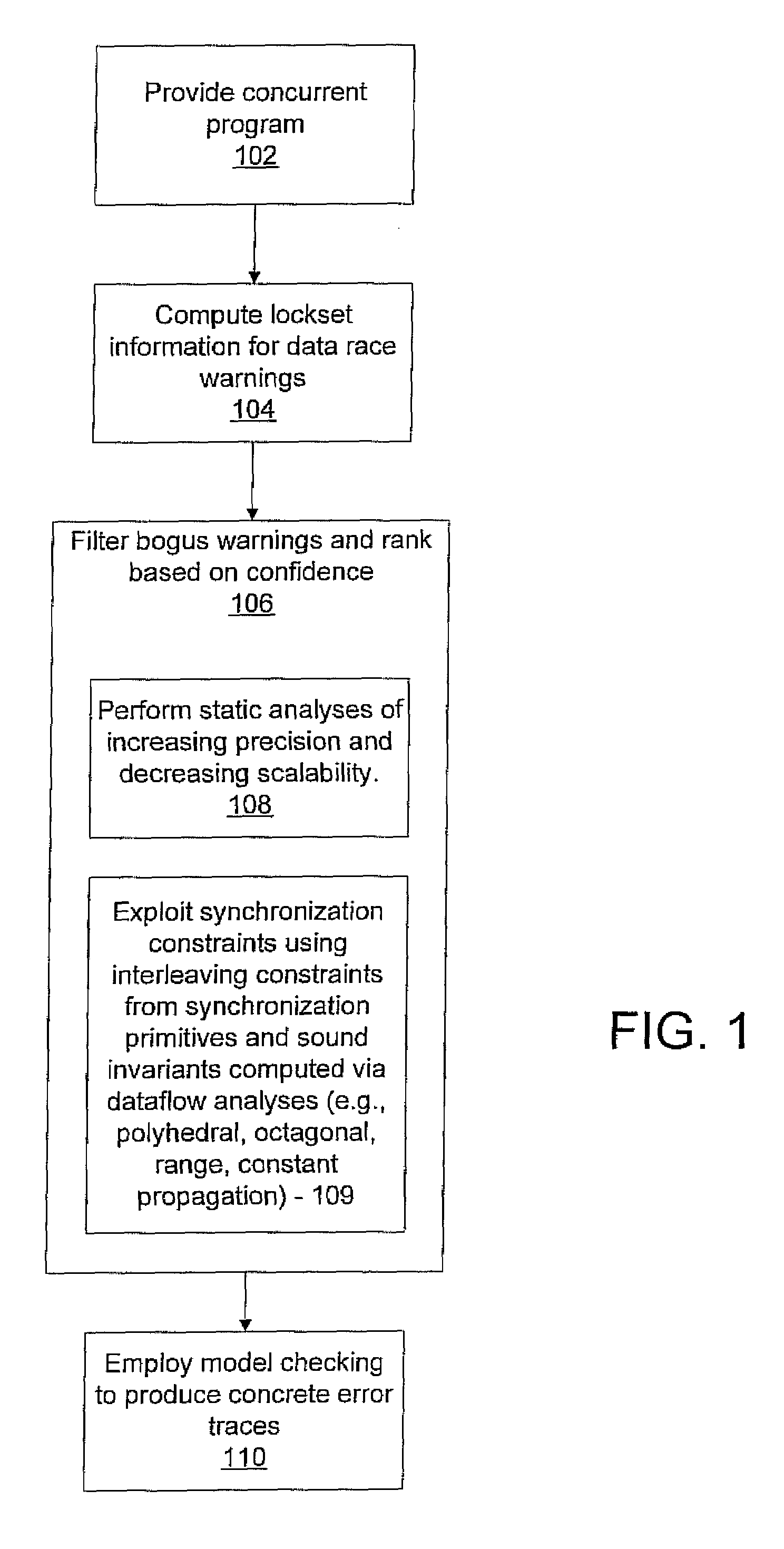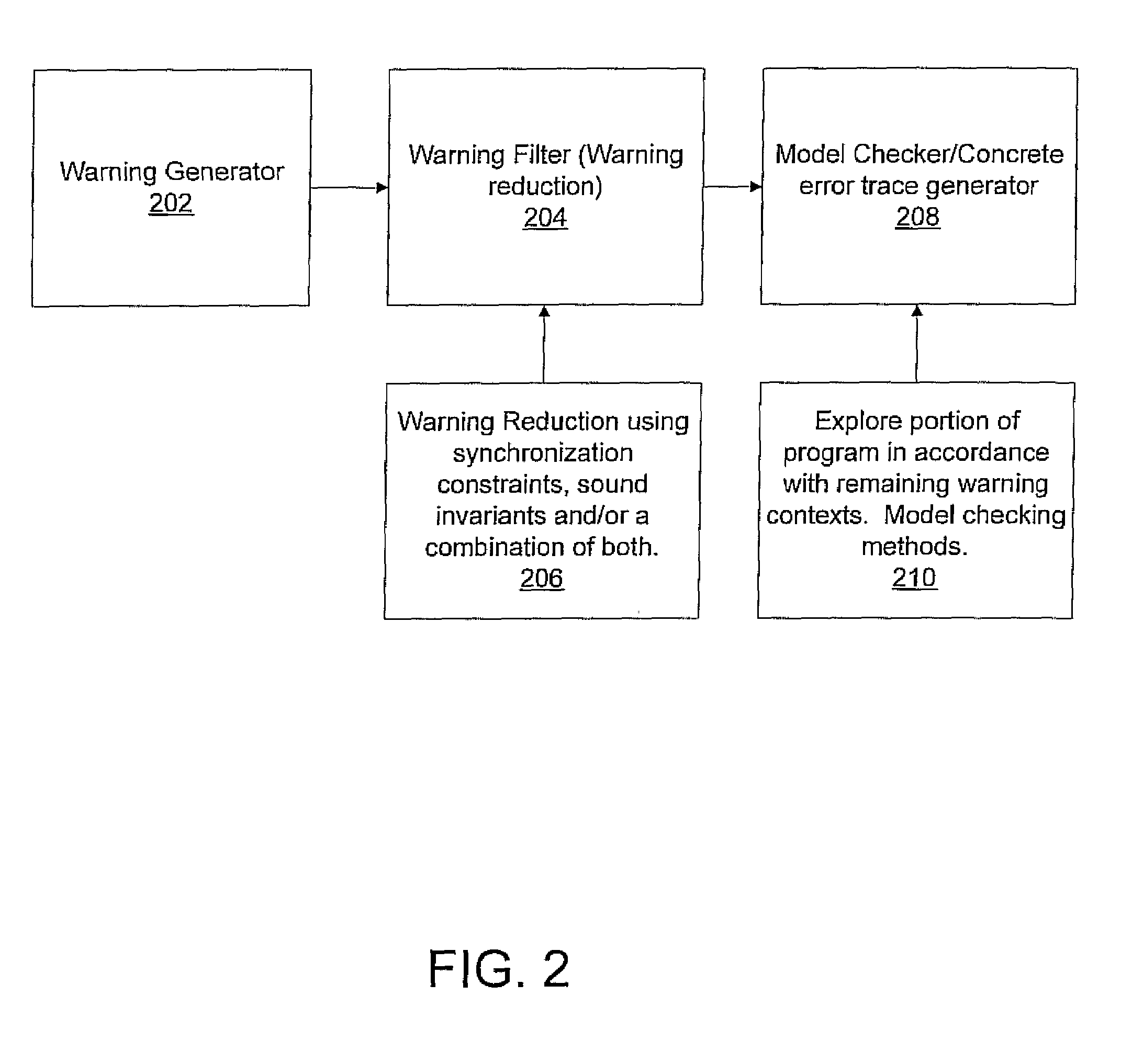System and method for generating error traces for concurrency bugs
a technology of concurrency and error traces, applied in error detection/correction, instruments, computing, etc., can solve the problems of difficult analysis, notoriously difficult generation of error traces for concurrency related bugs, and critical concrete error traces for software debugging
- Summary
- Abstract
- Description
- Claims
- Application Information
AI Technical Summary
Benefits of technology
Problems solved by technology
Method used
Image
Examples
example
[0064]We illustrate our strategy by means of the example concurrent program shown in FIG. 3 wherein different threads may execute the Page_Alloc and Page_Dealloc functions. The counter pg_count stores the number of pages allocated so far. The Page_Alloc routine tries to allocate a new page. If the number of pages already allocated has reached the maximum allowed limit LIMIT, then it waits (a3) until a page is deallocated by the page_dealloc routine and a waiting thread signaled (b3). For brevity, we have used pt_lock, pt_unlock. pt_send, pt_wait for the Pthread functions pthread_mutex_lock, pthread_mutex_unlack, pthread_cond_send, pthread_cond_wait.
[0065]The shared variable pg_count is accessed at locations a4, a11, b4 and b9. The lockset at locations a4 and b4 is {plk} and at a11 and b9 is {count_lock}. Since these two locksets are disjoint, the pairs of control locations (a4, b11), (a4, b9), (a11, b4) and (b4, b9) are all labeled as sites where potential data races could arise. Ho...
PUM
 Login to View More
Login to View More Abstract
Description
Claims
Application Information
 Login to View More
Login to View More - R&D
- Intellectual Property
- Life Sciences
- Materials
- Tech Scout
- Unparalleled Data Quality
- Higher Quality Content
- 60% Fewer Hallucinations
Browse by: Latest US Patents, China's latest patents, Technical Efficacy Thesaurus, Application Domain, Technology Topic, Popular Technical Reports.
© 2025 PatSnap. All rights reserved.Legal|Privacy policy|Modern Slavery Act Transparency Statement|Sitemap|About US| Contact US: help@patsnap.com



